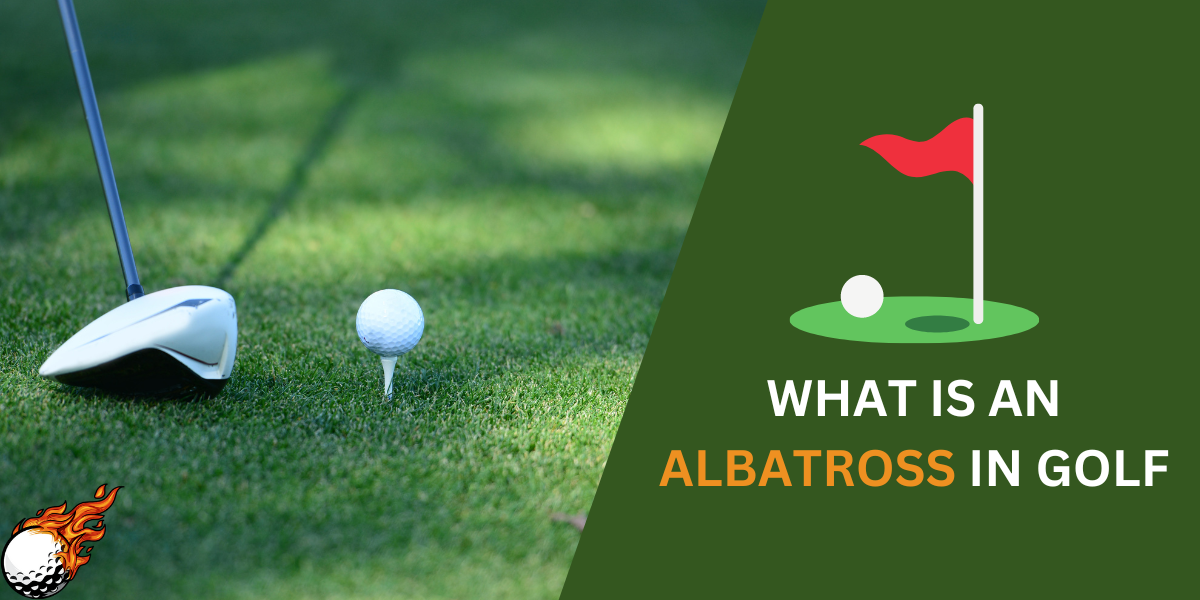
Have you ever shanked a ball way off course?
Are you frustrated by a slice or hook? Believe it or not, the culprit might be your grip! The wrong golf grip can mess up your entire golf swing. A weak grip means powerless shots.
Too strong? Say hello to wild hooks. Luckily, a proper golf grip is the foundation for hitting the ball straight and far.
There are even different grips – overlapping, interlocking, even a baseball grip – to find the perfect one for you. Let’s unlock your best golf game!
Your golf grip is the foundation of good shots
- Hands Work Together: Left hand on top (for right-handed golfers), right hand below.
- Finger Power: Grip with your fingers, not your palms. Aim for a firm but gentle hold.
- Choose Your Style: Overlapping, interlocking, or ten-finger grip – experiment to find what feels comfortable.
- Avoid Common Mistakes: Watch for weak grips (too many knuckles showing) or strong grips (no knuckles visible). Thumbs shouldn’t point straight down.
- Practice Makes Perfect: Do drills to train the right grip until it feels automatic.
Basics of a Good Golf Grip
Picture your golf club: it has a grip where you hold on and a club head that hits the ball.
A proper grip – how you place your hands on the club – is like the secret ingredient for a powerful, accurate swing. It might seem small, but it’s a game-changer!
Let’s break it down…

- Your Hands are the Team: Your left hand is your lead hand (even if you’re a righty golfer), and your right-hand goes below. Think of them working together!
- 3 Key Things to Master:
- Hand Placement: Where your fingers and thumbs go
- Grip Type: A few ways to do it (think interlocking, overlapping, and more!)
- Grip Pressure: How tightly you hold on (hint: not a death grip)
- Why Bother? Think about any sport… you need the right form to succeed. If a pro baseball player choked way up on the bat, they wouldn’t hit a home run. Same with golf! Even a golf instructor checks their grip before taking a big swing.
Next, we’ll learn how to put that left hand on the club the right way. Get ready!
Step-by-Step Grip Guide
Okay, it’s time to grab your club!
Don’t worry; there’s no need to swing yet; we’re just focusing on your hands.
Lead Hand Placement
- Picture a “V”: See where your left thumb and index finger meet. Your club rests along that “V,” with the shaft angled across your hand.
- Thumb Power: Your left thumb goes straight down the top of the grip, a little to the right.
- Keep it in the Fingers: Your left hand should grip mainly with your fingers, not squished into your palm.

Bringing in the Right Hand
- Pinky Power: Depends on what grip type you choose (more on that later). But either your right pinky goes over your left index finger (overlapping grip), or it snuggles right next to it (interlocking grip).
- Finger Wrap: The rest of your right-hand fingers curl around the club, nice and secure.
- Lifeline: See that crease on the right side of your palm? That should point up at your right shoulder (for right-handed golfers).
Grip Pressure Check-in
- Bird Test: Pretend the grip is a tiny bird. You want to hold it firmly enough so it doesn’t fly away but not so tight that you squish it!
- Too Loose = Trouble: If you squeeze, your grip will feel rigid. Relax until you feel in control but not stiff.
Would you be ready to try? Grab your club and give it a go! It may feel weird at first, but that’s normal. We’ll cover different grip options next so you can find your perfect fit.
The 3 Main Grip Types
Think of grip types like choosing your favorite ice cream flavor—they all get the job done, but you have to find the one that tastes best to you.
Here are the most popular golf grip options:
Overlapping (or Vardon Grip)

- The Classic: Named after a famous old-school golfer, this one is super common.
- How-To: Your right pinky rests over the top of your left index finger. The rest of your fingers wrap underneath.
- Who It’s Good For Most Golfers! It works for different hand sizes and gives a secure feeling.
Interlocking Grip
- Fingers Linked: Your right pinky and left index finger interlock like puzzle pieces.
- Promotes Unity: Makes your hands feel like one unit, great for smooth swings
- Heads-Up: It can be uncomfortable if you have bigger hands.
Ten-finger (or Baseball Grip)
- Just Like Baseball: Imagine holding a baseball bat – that’s the idea! All your fingers touch, no interlocking or overlapping stuff.
- Beginner-Friendly: It is the simplest to learn, and it is good if arthritis makes the other grips difficult.
- The Trade-off: You may lose some control and power compared to the other grips.
Choosing YOUR Grip
- Hand Size Matters: Smaller hands do better with interlocking or ten-finger. Big hands usually prefer overlapping.
- Experiment! Don’t be afraid to try them all. What feels most comfortable and lets you hit the ball well? That’s your winner!
Troubleshooting Common Mistakes

Even with the right grip style, it’s easy to slip into bad habits.
Let’s check for (and fix) these sneaky issues:
The Weak Grip
- What It Looks Like When you look down, you see way too many knuckles on your left hand. Your hands seem rotated too far towards the target.
- Why It’s Bad: Say hello to slicing the ball (when it curves uncontrollably to the right for right-handed golfers). You’ll also struggle to get any power.
- The Fix: Rotate those hands a bit away from the target. Ideally, you want to see two knuckles on your left hand when you look down.
The Too-Strong Grip
- What It Looks Like You have the opposite problem! There are not enough knuckles visible on your left hand, and your hands feel twisted towards your body.
- Why It’s Bad: Hook City! Your ball will curve wildly to the left (for righties).
- The Fix: Rotate your hands slightly towards the target, getting more knuckles visible on your left side.
Thumb Trouble
- Thumbs Down: If your thumbs press straight down the grip, you’re limiting wrist action. This saps your power!
- The Fix: Shift your left thumb slightly to the right side of the grip. Your right thumb should angle slightly to the left.

Palm Power
- Squeezing in the Palms: If your grip feels mainly in your palms, not the fingers, you’ll get a stiff swing and lose distance.
- The Fix: Focus on gripping with your fingers, especially the last three fingers of each hand.
Are you feeling Stuck? Ask a friend to take a picture of your grip from above! Sometimes, it’s easier to see the mistake than feel it.
Drills for Grip Perfection
Just knowing how to grip won’t automatically fix your swing.
These drills help make the proper grip feel natural!
The “Takeaway” Drill
- One Hand At a Time: Grip the club with your lead hand only (left hand for most golfers).
- Take Some Swings: Slowly practice just the takeaway – the start of your swing. Focus entirely on your hand position, making sure it feels correct.
- Benefits: Builds muscle memory in your lead hand, which is super important.

The Pencil Test
- No Club Needed: Grab a regular pencil.
- Mimic Your Grip: Hold the pencil like your golf club, using your chosen grip style.
- Pay Attention: Notice how it feels in your fingers, not your palm. This is the feeling you want with a real club!
The Slow-Motion Swing
- Take it Easy: Grab your club and swing in super slow motion.
- Check-In Points: Pause during the swing, check your thumbs, knuckles visible, and grip pressure. Did anything slip?
- Fix as You Go: Adjust anything that feels off, building that correct grip awareness.
Bonus Tip: Film yourself! Sometimes, watching your swing reveals grip issues you don’t even feel while doing it.
Remember, It takes practice to change old habits. Be patient, do these drills often, and you’ll soon have that rock-solid grip!
Conclusion
Think back to the start: Were you frustrated with slices, hooks, or weak shots? A proper golf grip is one of the biggest keys to fixing all that!
Let’s recap the basics:

- Hand Placement Matters: Where your fingers and thumbs go makes a difference.
- Choose Your Style: Overlapping, interlocking, or ten-finger…find what works for you.
- Grip Pressure Goldilocks: Not too tight, not too loose – just right!
Now, it’s about more than having a perfect grip.
It’s about progress! Keep practicing, try those drills, and soon, that good grip will become second nature. That means straighter, more powerful shots.
Frequently Asked Questions
How important is grip pressure when holding a golf club?
Grip pressure is incredibly important! Imagine holding a tiny bird – firm enough it won’t escape, but not so tight you hurt it. A tense golf grip pressure limits wrist action and weakens your shots.
What’s the difference between a weak golf grip and a strong grip?
A weak grip means you see too many knuckles on your lead hand, leading to slices. A strong grip shows too few knuckles and causes nasty hooks. Aim for a neutral golf grip to hit the golf ball straight!
Should my thumbs touch when using the overlapping golf grip?
Nope! With an overlapping golf grip, your right thumb rests slightly left of center on the grip, and your left thumb angles slightly to the right. This helps increase wrist flexibility.
Is the ten-finger grip only for beginners?
While it’s easier for beginners, the ten-finger grip (sometimes called the baseball grip) can work for golfers of all levels! Some golfers with smaller hands find it more comfortable due to how the pinky finger and middle finger interact with the club. It can still facilitate solid shots.
Can a bad grip cause a slice?
Absolutely! A weak golf grip is one of the most common culprits behind a slice (when the golf ball curves severely right for right-handers). Focus on a neutral grip to straighten that ball flight!













